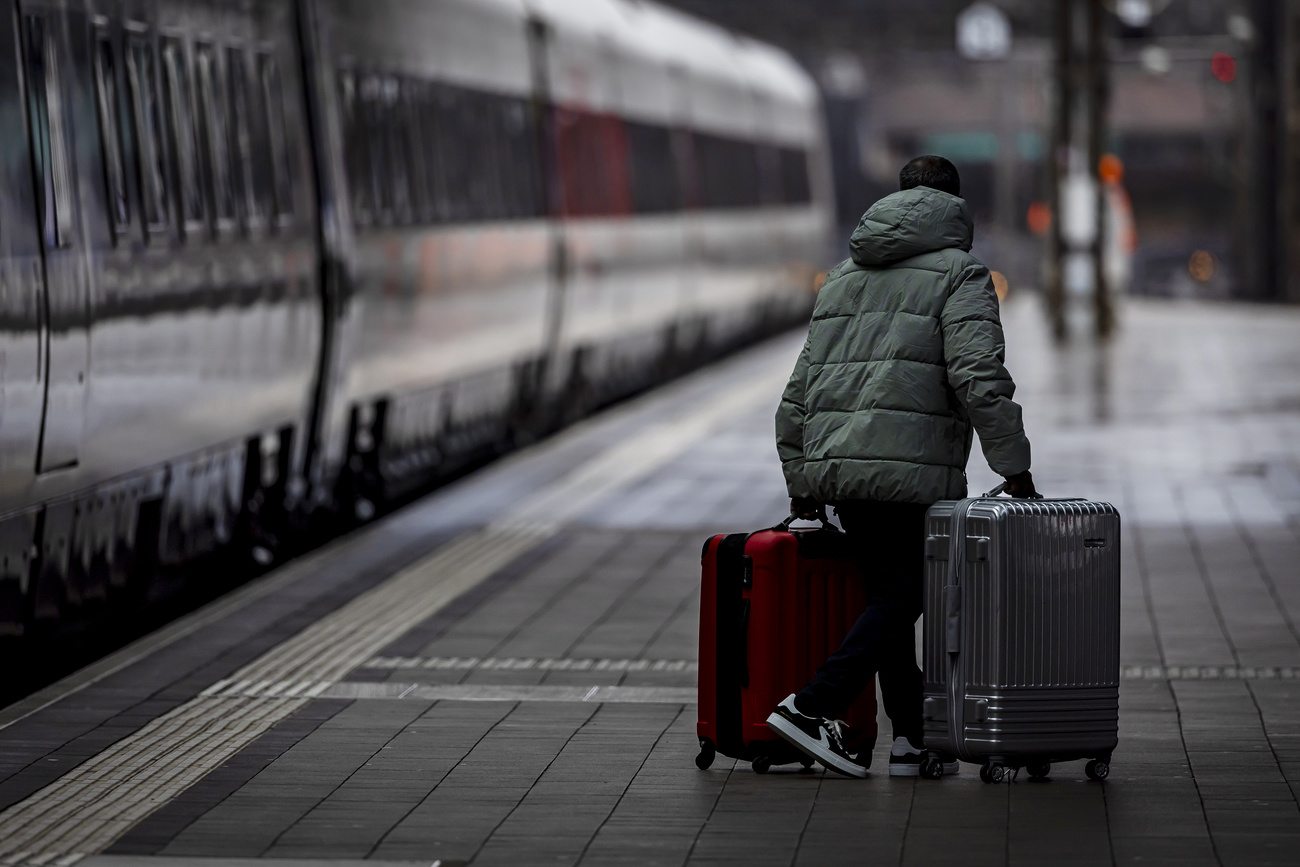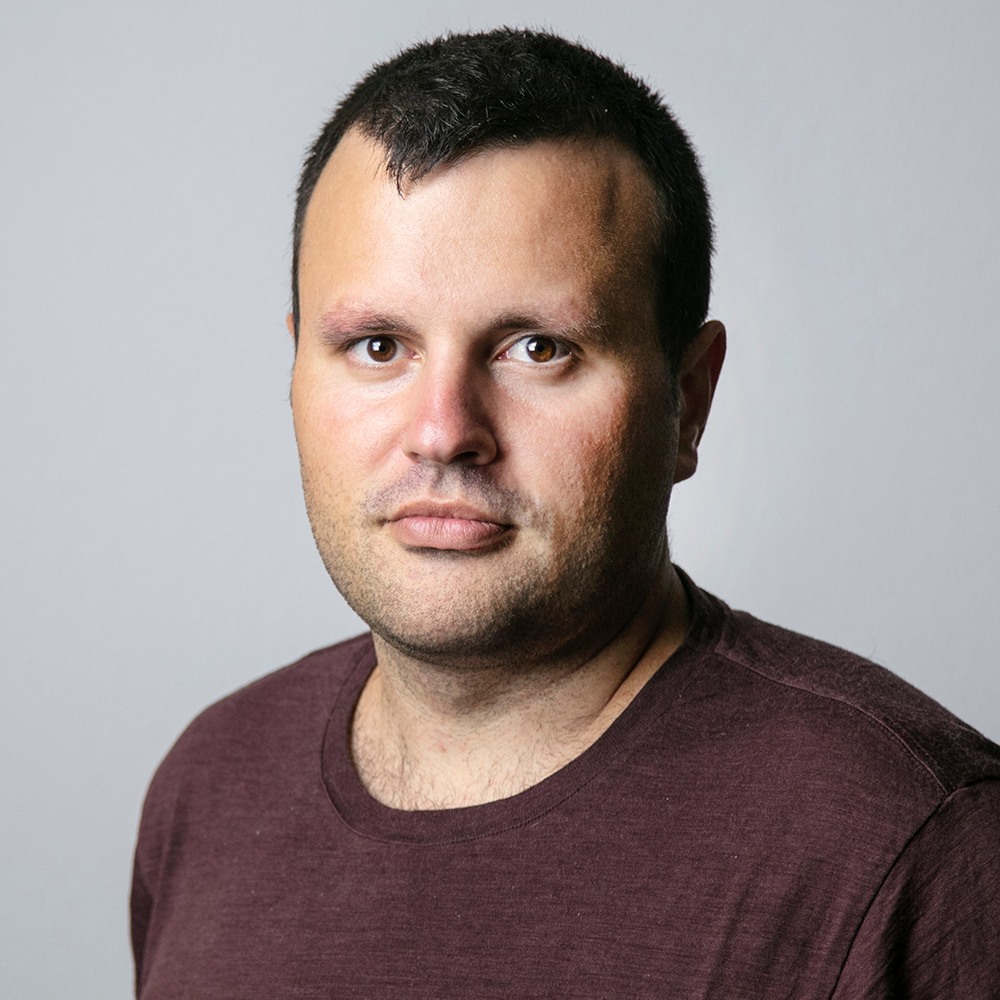How Switzerland and Europe use AI tech for migration control

Drones, surveillance towers and mobile phone data extraction: European nations, including Switzerland, are ramping up the use of technologies for border and migration control. The full extent of these developments has been revealed in an international investigation.
The regional district of Evros on the north-easternmost tip of Greece is nestled between Bulgaria and Turkey. Farmlands and small villages line a motorway, and red signs warn against entering prohibited areas. The cafés are filled with soldiers and police – the region is a highly militarised border area. Along 192 kilometres, the River Evros forms the external border of the European Union (EU) between Greece and Turkey. The river starts in the rugged Bulgarian mountains, from which it meanders through a wild landscape before flowing into the Aegean Sea in the south. This area is hot and humid in summer, a paradise for mosquitoes. The winters are harsh.
It was on one of these cold winter mornings in 2022, when a dozen people boarded a rubber boat to cross the River Evros to reach Greece. The river appears calm, but its current is strong. Despite the danger, the group managed to reach the other side, stepped onto EU soil and hid in the dense bushes along the riverbank. But they had no idea that they had been monitored – even before they left Turkey. According to Greek police files used for this investigation, the migrants were tracked shortly after their arrival by Greek officials using precise location data from the regional centre of the Automated Border Surveillance System (ABSS). This system also covers areas up to fifteen kilometres deep into Turkish territory.
Europe increasingly relies on high-tech systems to keep migrants out. The growing arsenal includes not only drones and thermal-imaging cameras at the external EU borders. It also features dialect recognition software, the analysis of personal mobile phone data and other tools within the EU and its member states – which also include Switzerland. The Alpine nation is not a member of the EU but is part of the Schengen area.
This complex surveillance network stretches from the River Evros in south-east Europe all the way to the English Channel between France and the United Kingdom. And it increasingly integrates artificial intelligence (AI) technologies.
The extent of this migration surveillance network has been revealed in a major international investigation. An international team of six journalists conducted more than 100 interviews in nine countries with authorities, activists, asylum-seekers, and security forces. They also analysed numerous public and confidential documents.

More
Swiss company supplies Serbia with surveillance technology
Lots of money, little transparency
This ramping-up of technologies is also a moneymaker for some. The AI boom in migration and border surveillance management is proving to be extremely lucrative for tech companies. For example, Anduril Industries – a large US tech defence contractor owned by Donald Trump supporter Palmer Luckey. Their AI-assisted surveillance towers, named Sentry, are deployed along the south coast of England. Radar and sensors monitor the surrounding waters day and night. The British Home Office refuses journalists’ inquiries about the number of such towers, stating national security reasons. How is the data used? Does Anduril use it to train its own AI databases? There is no information available on this either.
Such systems are not only a great business opportunity for tech giants. Swiss companies and research institutions have also been making money from the growing use of AI in European border management. The Zurich-based firm Decodio AG, for example, has exported surveillance solutions worth over CHF27 million ($29.5 million) to various European countries since 2015, including to Greece.
Greece plays a key role in European migration control and is considered a pioneer in its use of AI and other technologies in this field. At a meeting of European police officials in Warsaw in autumn 2024, the country was praised for its successes in preventing migrants from entering the EU via the land border. According to sources familiar with the meeting, these achievements were primarily attributed to the “technical barriers” used.
At the River Evros, these barriers consist of a five-metre-high steel fence that covers much of the border. It will soon be extended even further, thanks to EU funding. And the border will be enhanced by a comprehensive surveillance system, including AI-assisted drones, countless cameras, and fast-response border guard teams. The landscape here is already dotted with watchtowers and antennae. Camera feeds are transmitted directly to surveillance centres near border towns, where officers monitor numerous screens that cover every inch of the border – even into Turkish territory. If a drone or camera registers movement, an alarm goes off. A senior Greek official, who prefers to remain anonymous, refers to the system as “sleepless watchers”.
Greek border officers often inform their Turkish colleagues and share coordinates. They also regularly hold joint meetings, according to sources from both countries. In the first eight months of 2024 alone, Turkish authorities in the province of Edirne prevented over 12,000 migrants from even reaching the border. Jonas Grimheden, a fundamental rights officer at the EU’s border agency, Frontex, warned in an interview that while these technologies can make border management more efficient, they may also prevent people from exercising their right to seek asylum.

Switzerland makes annual contributions to Frontex, which have been steadily increasing. In 2024, it amounted to almost CHF36.8 million, the Federal Office for Customs and Border Security (FOCBS) confirmed in writing. The calculation of Switzerland’s contribution is explained in the Schengen Association AgreementExternal link and depends on the gross domestic product (GDP) of the associated country, a FOCBS spokesperson explained.
Like every Schengen country, Switzerland appoints two officials to Frontex’s management board. “They represent Switzerland’s interests and have the right to vote on all issues relating to the Swiss borders or Swiss personnel,” notes FOCBS.
Switzerland also sends personnel to support Frontex missions. In 2024, 108 Swiss employees contributed a total of 5,581 working days to various operations, FOCBS says. They were mainly sent to Greece, Romania, Spain, Croatia and Italy. “They mostly work as interrogators, dog handlers, document specialists, and border guards,” it says. Guards carry out border surveillance and checks at crossing points.
Switzerland will screen mobile phones
The growing use of technologies to conduct migration checks is not limited to Europe’s external borders but also takes place within the Schengen area. For example, several countries extract and analyse the personal mobile phone data of migrants. What happens to this data is often unclear. This practice will be implemented in Switzerland, too, from April 1, 2025, when a new ordinanceExternal link to the Asylum ActExternal link allows authorities to evaluate personal data from smartphones, laptops and other electronic devices.
In future, smartphones and other electronic devices can be screened by the State Secretariat for Migration (SEM), and their contents may be extracted and stored temporarily for up to a year, if the nationality, ethnicity, or travel route of the individual cannot be determined otherwise. However, it is not clearly defined which specific personal data this would entail. According to the Swiss government, the quantities obtained would be “too large” to draw up a definitive list.
In other words, all data could be extracted – telephone numbers, chats, photos, GPS data, and even content on social media profiles from platforms such as Instagram or Facebook. “It basically affects all data available on a carrier,” the SEM says. This is problematic, as individuals affected can de facto hardly oppose this practice. The explanatory notes to the ordinance also state that “the behaviour of the person concerned will be taken into account in the asylum decision”. An employee will initially “directly inspect” the devices, a SEM spokesperson says. In future, the use of a software is planned.
More
Germany as Switzerland’s questionable role model
Meanwhile, the German Federal Office for Migration and Refugees (BAMF) is one step ahead of its Swiss counterpart. Its staff have been using automated software for years. The SEM confirms that it has been in dialogue with the BAMF on this matter. In Germany, mobile phone scraping – extracting details such as phone numbers, emails or social media data – does not always comply with legislation. In some cases, courts have ruled that such procedures have even been unlawful. Stephan Scheel, professor of political sociology at Leuphana University Lüneburg, in Germany, researched the use of automated identification technologies at the BAMF. “I consider the extraction of mobile phone data to be particularly problematic, as it is the most invasive,” he says.
Apart from privacy issues, there are also technical concerns regarding the data analysis done during German phone scraping: it is highly prone to errors. In the first half of 2023, the system did not deliver usable results in 73% of cases. Also, it is not compatible with older mobile phones – and second-hand phones with previous owners lead to contradictory results. The previously stated identity of an asylum-seeker could only be “disproven” in 3% of cases. Nevertheless, some experts said off the record that phone scraping has become part of the standard procedure for asylum applications in Germany, despite its unreliability. To date, the programme has cost German taxpayers €22 million (CHF20.6 million).
The example of Germany shows how problematic the use of AI for migration work often is. Apart from the erosion of fundamental rights, on many occasions it provides only an illusion of efficiency.
“We know that this kind of technology is very expensive,” says Hanne Beirens, director of the Brussels-based Migration Policy Institute. Currently, AI is primarily used to combat the symptoms of migration – not its root causes, she says. Regional partnerships, for example, would be more productive. “In this sense, the widespread use of AI and other technologies is not a cost-effective approach,” she adds.
A version of this text first appeared in German language in WOZ Die WochenzeitungExternal link. It was part of the large investigation also involving the German newspaper TagesspiegelExternal link, the Greek investigative outlet SolomonExternal link, the Spanish newspaper El PaísExternal link, and the US online magazine InkstickExternal link.
This investigation was supported by grants from the Investigative Journalism for Europe FundExternal link, Journalismfund Europe External linkand Netzwerk RechercheExternal link.

More
Our weekly newsletter on foreign affairs

In compliance with the JTI standards
More: SWI swissinfo.ch certified by the Journalism Trust Initiative















You can find an overview of ongoing debates with our journalists here . Please join us!
If you want to start a conversation about a topic raised in this article or want to report factual errors, email us at english@swissinfo.ch.